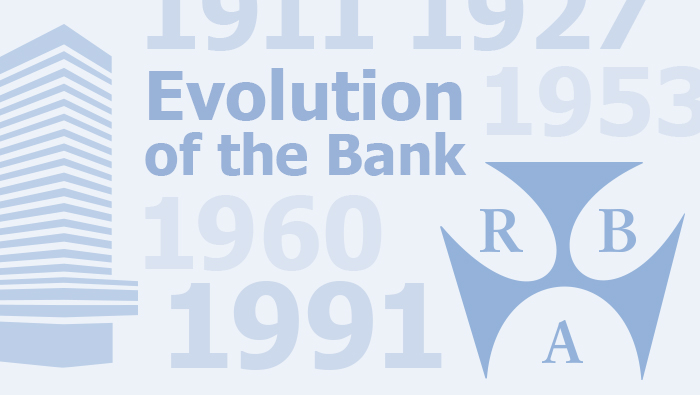December 2021
- Download the complete Bulletin 3.5MB

Which Firms Drive Business Investment? New Evidence on the Firm-size Distribution
Business investment plays a key role in our current and future economic prosperity. Aggregate investment can be difficult to predict, however. This may be because different firms face different investment environments, and the factors behind their decisions can vary. This gives rise to the question: which types of firms are most important for driving aggregate outcomes? Detailed, firm-level data shows that large firms account for a significant share of investment in Australia, and are the major drivers of the patterns in aggregate non-mining investment. Understanding how firms of various sizes contribute to overall outcomes will help us to gauge the potential impact of any differences they might face, including via policies, on investment outcomes and the economy.

Why Are Investment Hurdle Rates So Sticky?
Firms commonly evaluate potential investment projects by comparing expected returns to a hurdle rate. Survey evidence suggests that hurdle rates have remained high and well above the weighted average cost of capital (WACC) in recent years, as has the ex post return on invested capital for Australian-listed companies. This stickiness is a marked contrast to the decline in interest rates. This article reviews the evidence for why hurdle rates are so far above the WACC, and why they have remained so sticky over time. Proposed reasons include the perception that returns available on potential projects are unrelated to the level of interest rates. In addition, firms may avoid reducing hurdle rates to minimise the risk of regret, and some business managers could view long-term declines in interest rates as temporary.

Do RBA School Talks Improve Student Outcomes?
As part of our education program, the Reserve Bank of Australia (RBA) conducts school talks to promote economic literacy and encourage a larger and more diverse group of students to study economics. To formally evaluate this aspect of our education program, we surveyed students before and after school talks in a randomised control trial and the results were assessed relative to a control group. We found that RBA school talks improve both perceived and actual understanding of key economic concepts and increase the confidence of students, including those who are less socially advantaged. Importantly, smaller talks conducted online were perceived to be just as useful as those conducted in person, which suggests that the geographic reach of the school talks program could potentially be expanded considerably without sacrificing quality or student outcomes.

The Central Bank's First Economist
In 1930, when officials from the Bank of England came to Australia to assist Australian governments with their budgetary problems, they found that the original Commonwealth Bank, then Australia's central bank, did not have an economist on its staff. They urged the Bank's Governor to appoint a qualified economist and recommended Leslie Melville, Professor of Economics at the University of Adelaide. Melville joined the Bank in March 1931. Some two decades later, when he left to become Vice-Chancellor at the Australian National University, Dr HC Coombs wrote to him saying that he had ‘made a contribution to the theory and practice of central banking which is without equal in the world’. As Melville's 100th birthday approached in 2002, the Australian National University decided to hold a public lecture in his honour. Governor Ian Macfarlane was invited to give the inaugural lecture. He concluded that Melville was ‘one of the most distinguished Australians of the past century’. The 20th Melville Lecture will be given in early 2022 by the Treasury Secretary, Dr Steven Kennedy. Ahead of this event, the latest records to be released in the Bank's new digital archive, Unreserved, include Melville's papers in digitised form. This article traces Melville's life and career, and his significance as the Bank's first economist.

Recent Changes to the Reserve Bank's Liquidity Operations
The Reserve Bank's policy measures to support the economy in the wake of the COVID-19 pandemic have significantly increased liquidity in the banking system. Consequently, market participants have had less need to use some of the Reserve Bank's liquidity operations and facilities. In response, the Bank reduced the frequency of its regular open market liquidity operations from daily to weekly. It also removed the requirement for financial institutions that make payments outside of business hours to source additional liquidity from the Bank via open standing facility repos so long as they are holding sufficient Exchange Settlement balances. This article outlines these recent operational changes.

Implications of the IMF's SDR Allocation for Australia and the Global Economy
As part of the global policy response to address the economic challenges associated with the COVID-19 pandemic, in August 2021 the International Monetary Fund (IMF) allocated US$650 billion worth of Special Drawing Rights (SDRs) to its members, providing a significant boost to global liquidity. This article details the workings of SDRs and describes how vulnerable countries can use this additional liquidity in a range of ways, including to support spending on their country's crisis response. It also considers how countries that do not have a need for this liquidity, like Australia, may use a share of their SDR allocation to assist more vulnerable countries.

Corporate Debt Covenants in Australia
The economic downturn associated with the COVID-19 pandemic has raised questions about the extent to which a deterioration in the financial health of some businesses could lead to breaches of debt covenants – with potential knock-on effects on firm behaviour and loan quality. This article includes a new data set on corporate debt covenants in Australia, developed by applying text analytic techniques on the annual reports of non-financial listed companies. It reveals that the share of companies reporting debt covenants has steadily increased over time from around 10 per cent in 2002 to almost 40 per cent in 2020, although the proportion of firms with covenants that reported a breach has remained stable at roughly 13 per cent. Also, following a breach, firms try to get their financial indicators back on track quickly. This study is a first step in understanding the role of debt covenants as a point of financial friction in the economy.

The Indian Banking System
Banks play a key role in India's financial system and underpin economic growth. However, during the 2010s, the health of Indian banks deteriorated significantly and a subsequent decline in credit growth contributed to a slowdown in economic activity. Although Indian authorities have taken a number of steps to strengthen the banking system, progress has been difficult and has been further curtailed by the COVID-19 pandemic. While financial linkages between Australia and India remain limited, India is an increasingly important trading partner for Australia, and continued weakness in its banking system is likely to weigh on India's demand for Australia's exports.
The graphs in the Bulletin were generated using Mathematica.
ISSN 1837-7211 (Online)
